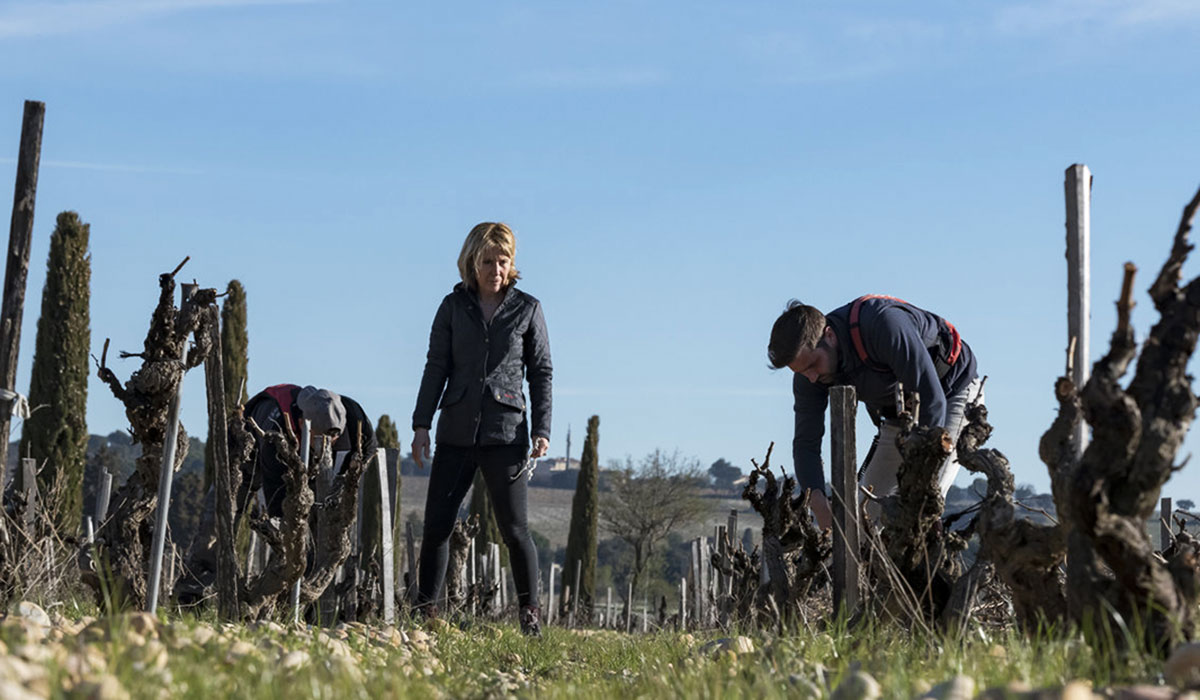The 2021 vintage is what we like to call a winemaker's vintage. It's a difficult vintage in which frost will play a major role in the decisions made by estate owners.
Over 150 wines and 30 vintages of Châteauneuf du Pape in stock
> Châteauneuf-du-Pape: prices and wines in stock <
The months of December to February did not augur any difficulties, as the winter was particularly mild (2.5 degrees warmer than average), but in the end it was spring that gave the winegrowers a hard time. Sub-zero temperatures attacked the vineyards, and it was the appellation's proximity to the Rhône that allowed it to suffer less damage than elsewhere. In the end, it was the edges of the appellation that were hardest hit, and the heart of the region a little less so (1.5° measured in Châteauneuf-du-Pape, compared with -7° in other parts of Vaucluse).
☀ After this episode, fine temperatures from June to mid-August allowed the grapes to continue ripening. A fine rain in early August will ensure that the grapes do not suffer too much water stress and thus continue their slow ripening.
By the end of the summer, the grapes had been analyzed and it was clear that the 2021 vintage was going to be a late one, the result of a relatively long vine cycle due to the nights. The foliage in certain plots will help to speed up berry ripening while preserving optimal quality.
? In the end, after the last harvest in October, the first work in the cellars announced rather good measurements. Good color intensity and acidity point to a wine with good ageing potential. However, for those who love your structure, the first pressings suggest average degrees lower than in previous years.
We'll need a few more years before we can properly taste the wines of Châteauneuf-du-Pape 2021, but with these initial measurements, we're sure to get an opulent, rich wine, but certainly more delicate and less strong than previous vintages.
Tasting: The style of Chateauneuf du Pape wines
Châteauneuf du Pape red wine
Although Châteauneuf du Pape red wines are produced in a wide variety of styles, they share common characteristics of fresh red and black cherries, strawberries, kirsch, black pepper, black raspberry, spices, earth and garrigue, the region's typical fresh herbs. Textures can be lush, lush and pulpy when young, taking on silky characteristics with age.
One of the great qualities shared by most Chateauneuf du Pape red wines is their great drinkability. Most Chateauneuf du Pape wines are delicious young. Most wines do not need to be aged or cellared before drinking. Equally important is their ability to age and develop.
In many cases, the ideal maturity for most Châteauneuf du Pape wines is between 8 and 12 years of age. Some estates produce wines that can age for decades, but this is not the case for most of the region's wines.
White wine from Châteauneuf du Pape
Around 5 % of Chateauneuf du Pape's production is devoted to white wine. Most white wines are at their best when young, with a fruity, pulpy, spicy style. Fresh, sweet, tropical notes of citrus, honeysuckle, orange, sometimes exotic fruits and spices.
Many of these Châteauneuf du Pape white wines also offer rich textures. Some of Châteauneuf du Pape's finest white wines can age for decades, including Beaucastel Vieille Vignes.
A few estates also produce small quantities of Vin de Paille, a sweet wine usually made by taking bunches of grapes and drying the fruit on mats or racks before fermentation.






![✨ Comptoir des Millésimes honors Champagne's great winemakers ✨[LINK TO THE ORGANIC CELLAR]We've selected 11 exceptional estates that reveal the full richness of Champagne terroir through unique, refined cuvées. Hugues Godmé - In Verzenay, this family-run biodynamic estate offers precise, vibrant champagnes with a beautiful mineral tension.Egly-Ouriet - A benchmark for the Montagne de Reims, its powerful champagnes, aged for long periods in barrel, impress with their complexity.Moussé Fils - In Cuisles, the Meunier grape is king. Pertois-Moriset - Pure, taut Chardonnay Grands Crus for lovers of chalky finesse. A fine address in Mesnil-sur-Oger.Geoffroy - In Aÿ, this domaine produces fine champagnes, carefully crafted and barrel-aged to reveal the full complexity of the terroir.Larmandier-Bernier - Biodynamic viticulture, exceptional parcels and purity. Crystal-clear, intense champagnes for connoisseurs.Roger Coulon - Eight generations of expertise at Vrigny. Balanced, subtle and elegant champagnes.A. Bergère - In Avize, a dynamic house offering expressive, fruity and accessible cuvées.Adrien Renoir - A promising talent from Verzy, he produces fine, complex champagnes with a true sense of terroir.De Sousa - Emblematic house in Avize. Richness, depth, long ageing: Chardonnay at its peak.Pierre Paillard - In Bouzy, the family magnifies Pinot Noir with vinous, racy and sincere cuvées.📦 Order now on our website#ComptoirdesMillésimes #Champagne #VigneronsIndépendants #GrandVin #ChampagnesdeTerroir #LivraisonRapide](https://www.comptoirdesmillesimes.com/blog/wp-content/plugins/instagram-feed/img/placeholder.png)